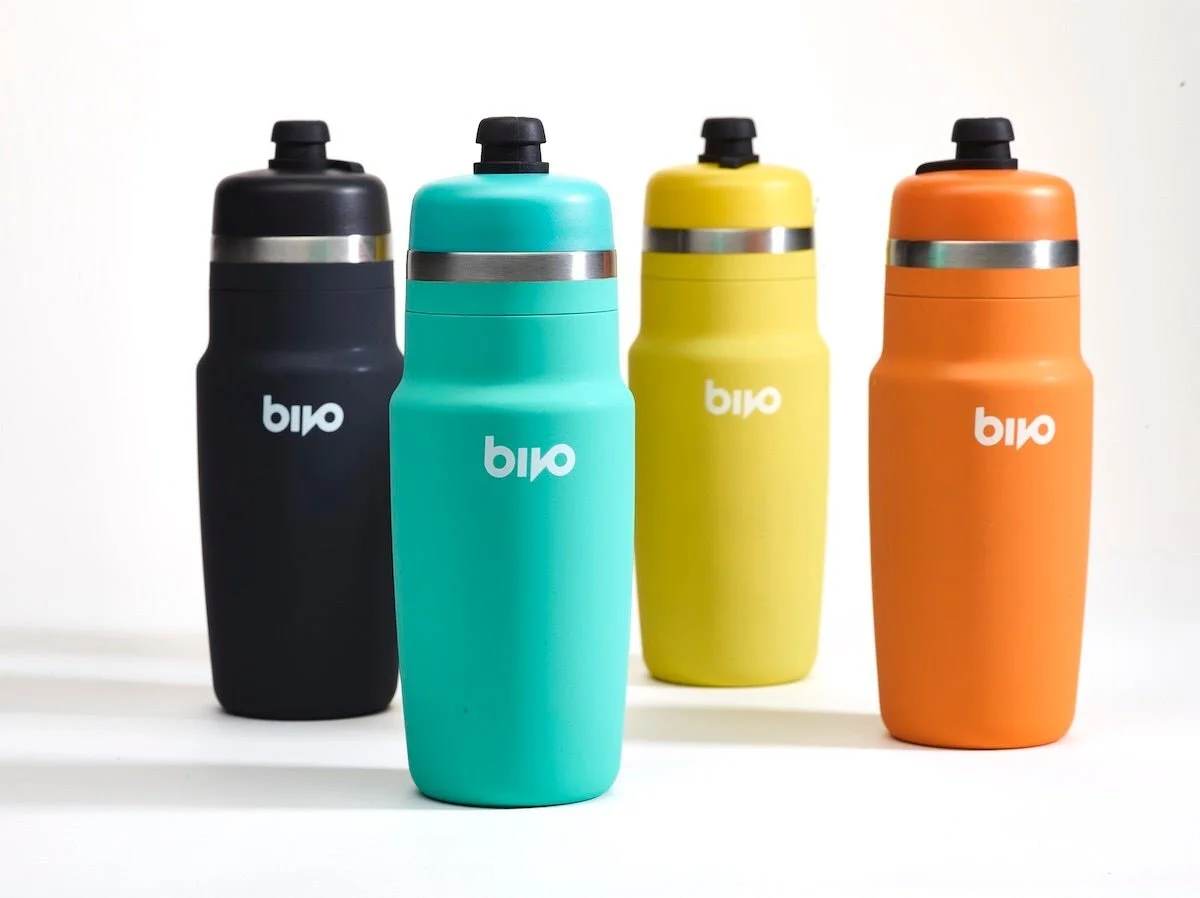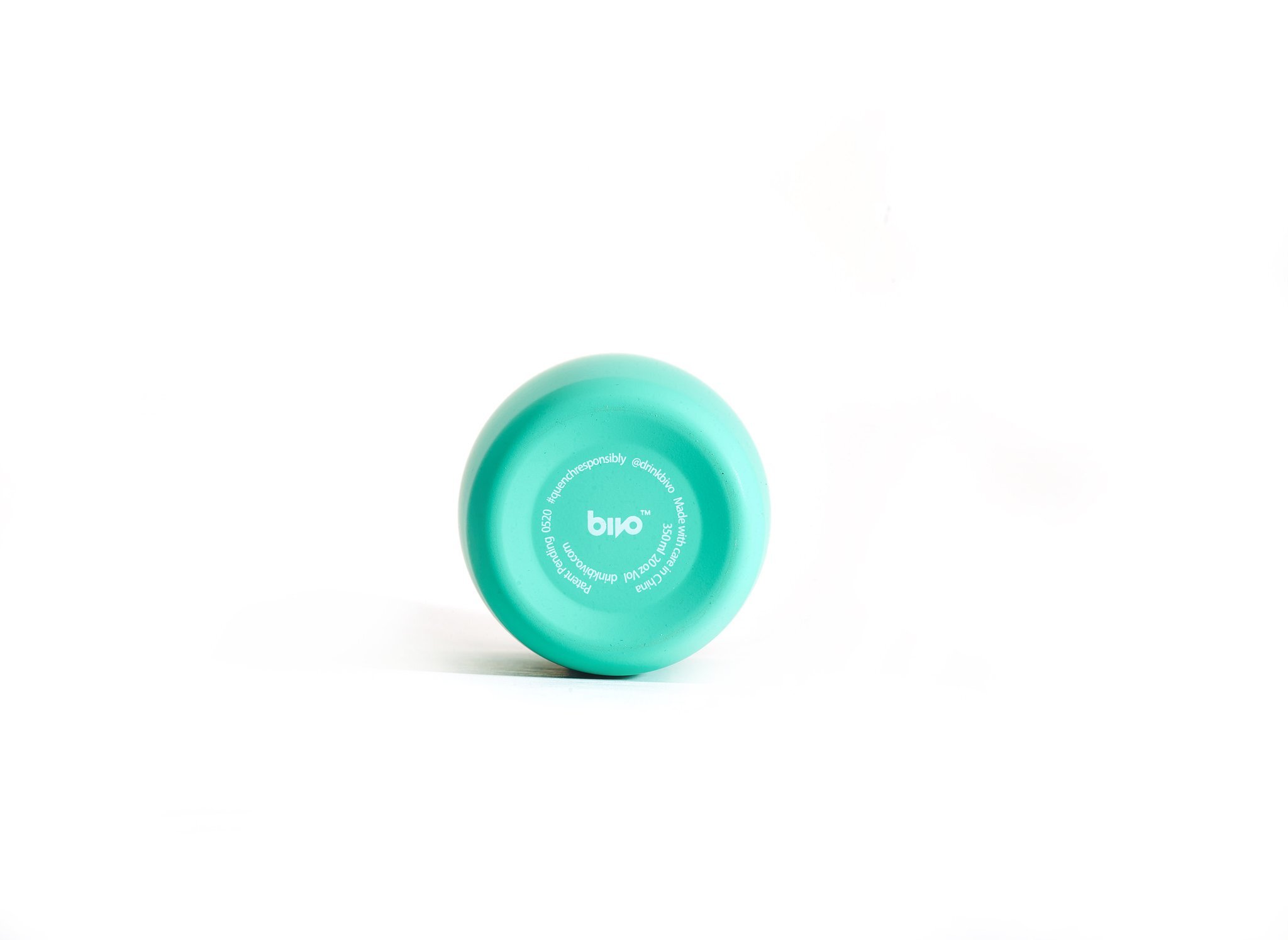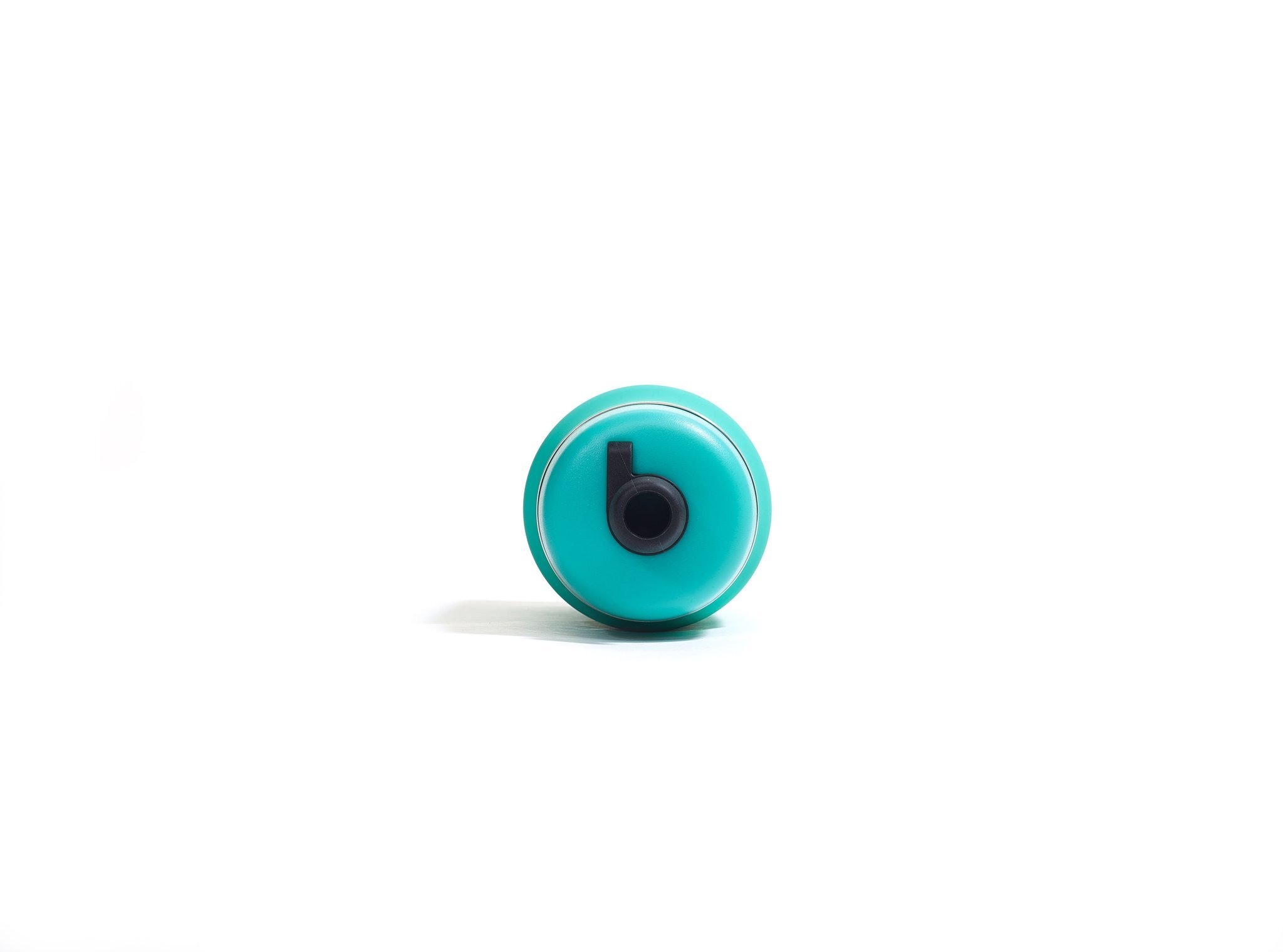Metal bottles are making a come back
The Bivo One comes to Canada
We’re excited to announce that VéloColour is now an official Bivo One retailer, the first stainless-steel bottle with a flow-rate designed for cyclists.
The Bivo One
With its patent-pending high-flow sport nozzle, food-grade silicone components, and BPA free polypropylene lid, the Bivo One is a far cry from the very first aluminum bidon.
The first bidon came on the scene just after WWI. It had a similar shape to the bottles we use now and was made from aluminum with a cork stopper, and mounted in aluminum handlebar cages. It wasn’t the most aerodynamic set up but neither were the front jersey pockets of the day.
Ken Mitchell, Tour de France 1955. Photo: Cycling Weekly Archive
Then, René Vietto transformed water-carrying for cyclists in the 1939 Tour by centrally mounting one bidon on his handlebars, and mounting the other one on the down tube. You can probably imagine the bike handling benefits from taking all that weight off of the handle bars. By the 1960s, handlebar cages were completely abandoned in favour of mounting the now squeezable, plastic bottles inside the bike frame triangle. First one bottle, then two and we have been riding like that that ever since.
The bidon got another big makeover in the 80’s when Coca-Cola sponsored the Tour de France.
All the riders in the 1986 Tour got bright red, plastic bottles featuring the iconic Coke branding. Suddenly bidons were not just a way of keeping cyclists from collapsing of thirst, they were a marketing tool and everybody jumped on the opportunity. These plastic bottles were cheap to make and easy to toss for fans to pick up as a road-side souvenir, a tradition that has become the sport’s version of catching a foul ball at a baseball game.
Belgian cyclist Dries Devenyns throws his bottle during the 10th stage of the 2011 Tour de France. Photo: EPA/Nicolas Bouvy
Fast-forward 50 years – we are now well aware of the long-lasting and permanent impact plastic has on the environment.
Today, the cycling industry is grappling with balancing tradition while responding to environmental responsibility. In April 2021, The International Cycling Union instituted new (and very controversial) rules preventing riders from tossing trash — including bidons — anywhere but in specified areas, dramatically ending the decades long toss-and-catch ritual and causing an outcry from the cycling community in response. Thomas De Gendt, a Belgian rider, called the issue “bottlegate”. Change may be necessary, but it sure doesn’t come easy sometimes.
At VéloColour, we’re also finding a new, environmentally responsible path forward.
We know change needs to happen. We also want to use beautiful, highly functional cycling goods that are made to last. We ride our bikes a lot and have incredibly high standards. All this and our focus on moving away from plastics is part of our decision to be a Bivo One retailer, the first (and only) in Canada. We know some changes will be slow and harder to implement, but this one to us felt like a no-brainer.
Carina and Robby, Bivo’s founders, set out to design a stainless steel performance water bottle with a flow rate that could keep up with their hydration needs. Leveraging the experience of an ex-NASA engineer, they methodically developed the Bivo One to achieve an unmatched flow-rate without the need to squeeze.
The Bivo One is beautiful, healthy, and functional.
While the Bivo One won’t be race acceptable it is an excellent choice for riders of all levels. The Bivo fits well in most standard bottle cages - carbon, titanium and aluminum, and stays quiet and rattle-free too. After many months of use we can honestly say that we prefer using these to standard plastic bottles in pretty much every way. Infact, and a surprise to us, these bottles deliver water faster than your standard squeeze bottle. After your first mouthful of water the second thing you’ll notice is the super clean taste.
One of the best parts of the Bivo? The noticeably cleaner tasting water.
Say goodbye to that stale, plastic taste. Even after days in the bottle (we’ve done it by accident of course) the water still tastes fresh and ready to drink.
The Bivo One is made with high quality stainless steel and food-grade silicone — you can literally taste the difference in the water. We didn’t even know what we were missing. This alone is reason enough for us to never go back to a plastic bottle again.
Some will ask “how much does it weigh?” We know a lot of cyclists are super weight concious and the grams will be counted and we know the weight of the Bivo will be a concern to a handful of cyclists. They are super-thin walled and surprisingly light for a stainless bottle and may be a little under double the weight of an empty, dry plastic bottle. At our measure of 194g it’s something very few of us would actually be able to feel in hand but the scale tells all. Warning weight weenies, this may not be your bottle, but we love them!
In the words of ICU spokesperson, Louis Chenaille: “We firmly believe that these measures, which in some cases require changes in attitudes, will contribute to making cycling the sport of the 21st century.”
We’re excited to see what the future of cycling holds, and we want to be part of the movement that pushes us forward towards that cleaner and more just future – one bag, one cap, one bike, one bottle, one step at a time.
Thanks to Cycling Weekly and The New York Times, which were used as references for this post.







